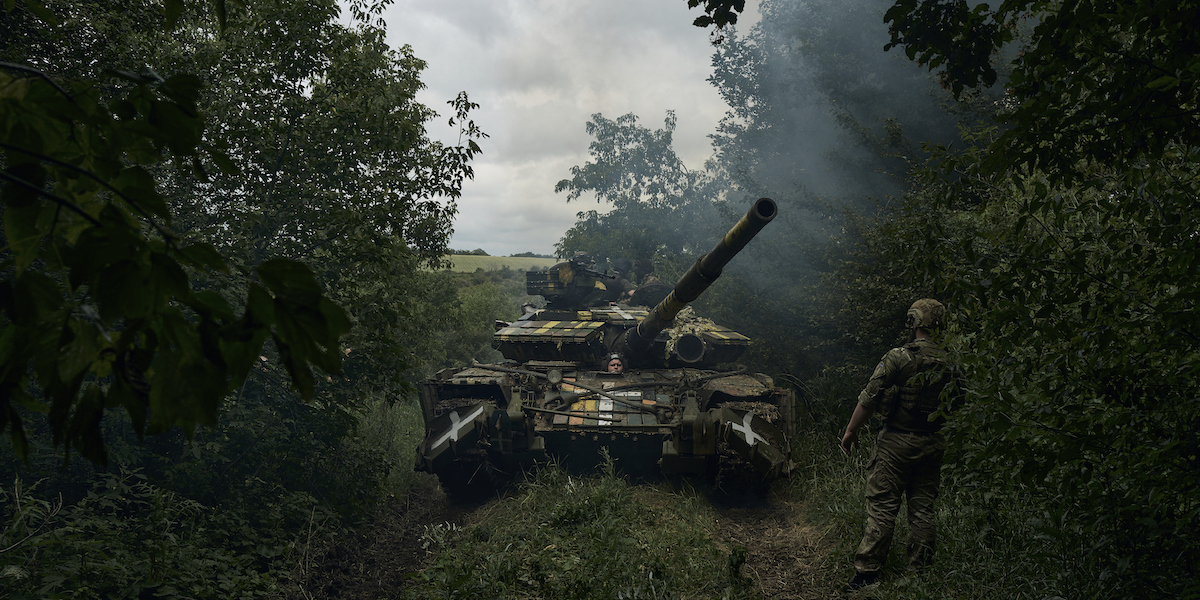The Ukrainian counter-offensive officially began in early June and is taking place along the border of the eastern areas of Ukraine controlled by the Russian army, especially in the Donetsk region. Ukraine has said it has already liberated three population centres, and there is not much information on how the Russian army is responding on the ground: in some areas the defense seems to be firmer, in others less so. In general, however, it seems that in recent months the Russian army has attempted to strengthen itself, equipping itself with new tools and strategies to defend itself more effectively, among many weak points that nonetheless remain.
Ukrainian soldiers have begun counter-attacks in the Zaporizhzhia region in southeast Ukraine, captured by the Russians in the first weeks of the invasion. It is a particularly important region due to its role in supplying Crimea, the peninsula occupied and annexed in 2014 by Russia. In addition to Zaporizhzhia, Ukrainian actions also focused on Bakhmut, the small eastern town that Russians and Ukrainians have been fighting for months, and whose conquest, despite its low strategic value, has gradually assumed an increasingly symbolic value.
Ukraine’s goal is to push back the war front towards the east and break it: in this way the Russian army would not have control of the connections with the Crimea, from where any reinforcements could arrive.
At the moment both sides are suffering big losses, and it is too early to say how and how extensively Russia will respond to the counteroffensive, whether it will be able to stop it or not. Above all, there are news of Russian attacks carried out with drones and missiles in various Ukrainian cities. Based on a number of videos and documents, as well as talking to Ukrainian soldiers and Russian POWs, the New York Times he wrote of a significant improvement in the combat strategies of the Russian army, which in recent months seems to have tried to adapt to the way in which the Ukrainians fight.
Some Ukrainian soldiers spoke of Russian operations more careful and studied than those of the first months of the war, in which Russia had gained ground mainly thanks to a massive invasion of artillery vehicles: the momentum, however, was almost immediately curbed by the resistance counter-attacks and ambushes that quickly filled the Ukrainian countryside with destroyed Russian tanks.
According to the sources of New York TimesFor example, the Russian army has begun to no longer send its armored vehicles to areas where they are likely to be damaged and destroyed, and to make more frequent use of drones. Or to pinpoint the location of the Ukrainian trenches prima to carry out an attack. It also appears that there is greater coordination between artillery forces and air forces, and according to some Western officials all this could make the Russian army a more formidable opponent than it has been up to now.
The Russians have also started to build better and more hidden trenches, which look like “Vietnam-style spider holes”, as defined by a report by the Ukrainian army relating to some military actions carried out last March, “so deep that they cannot be detected by a drone. Russia also has quite powerful air forces, to which the Ukrainian military will be exposed as it advances, if it does.
These improvements were partly seen in Bakhmut, almost completely conquered by the Russians, also thanks to the massive involvement of the Wagner group, the Russian mercenary company that fights in the service of the Russian government in Ukraine. Ukrainian soldiers who fought there spoke of generally better armed Russian soldiers, and described a series of effective and well-coordinated maneuvers, alternating between artillery attacks and raids with small groups of soldiers. The indifference of the Wagner group to the losses it could suffer in order to win the battle also seems to have contributed to the Russian conquests.
However, Bakhmut’s was a single mission, and it will take time to see if and how much Russian forces will be able to replicate this efficiency on a large scale, in all the points where the Ukrainian counter-offensive will concentrate.
The situation described by New York Times seems to indicate a general improvement, but it is also true that the Russian army is still lacking in many respects: for example, the soldiers currently in the field are poorly trained, because many of the more experienced ones have been killed, and Russia is entrusting in many cases to ex-convicts employed to fight. The Russian army is also low on ammunition, as well as tanks – the latter is nothing new, but these days he admitted it publicly the Russian Defense Minister Sergei Shoigu, who during a visit to a plant that produces military vehicles in Siberia said that production must increase.
